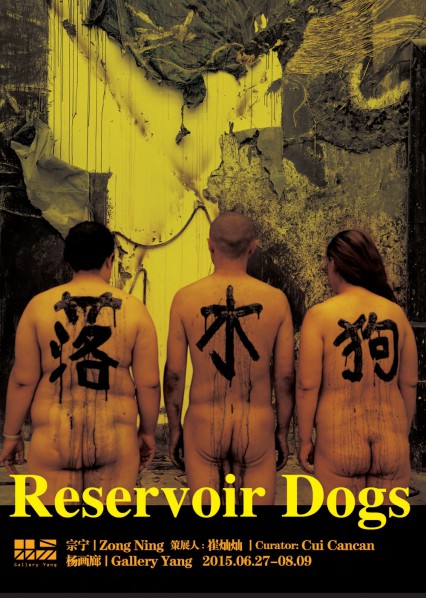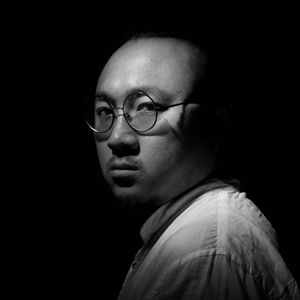
Preface
By Curator Cui Cancan
For an artist, a solo exhibition is not merely to display his works. It is like a narrative of a particular individual, presenting his identity, his state of mind, his position, as well as various responses he makes – something like a motley of autobiography, fragmentary speeches, and longings. In the structure of this narrative, works are no more than refractions of a personal life, and exhibition hall a specimen showcasing scattered information. It resembles the case of a honey bee: the pollination being finished, the bee has to leave the flowers, go back to requite its hive, and then start another round of its cyclic life.
Zong Ning grew up on the grassland and then in a new industrial city. In the movement of the Support Border Areas, his father, together with the family, moved to Wulagai, and later to Wuhai. Like the most of kids belong to that generation, Zong Ning had a childhood life of austerity yet not lack of good moments and simple happiness. He went to Beijing from a small township in 2001, and lived in a basement for a long time. He had been student of fine arts college, teacher of painting class, private tutor, creator of a website, artisan of commercial painting, and assistant of artists – livelihood used to be his primary concern. In those days, artistic creation was for him a meaningless consumption: it was too abundant in resources to be resigned to its own dying; yet to live, it had to resort to a medley of irrelevant methods. Across that iron gate of reality, he found the happiness of childhood was no more .
In 2001, Zong Ning moved to Heiqiao outside the 5th Ring Road, a place of something like the late Painter Village in the old Summer Palace. Over 1,000 artists, with aspirations and almost nothing else, lived in Heiqiao, where the conditions were even worse than in Zong Ning’s small hometown, although it was located in Beijing, an “international metropolis” in the remote eyes of his family. Here potential hope sneaks up on turbulence, unrest, and perseverance. For as long as several years, Zong Ning had been fanatically painting various imaginary scenes, and taking notes of the relations between himself and the real life. On those pictures painted and repainted, were his own feelings unfettered by the world. This artistic activity brought no goodness in the utility sense of the word, yet was crucially important to him. Through it he threw off the shackles of prejudice, obtained the right of free decision, and crossed the boundary of time and space. He often got deeply drunk in the dull life. Against the completely unchanged situation, his wantonness and sense of oppression seemed at once respectable and hopeless.
Contrary to the cheap structure of reality, Zong Ning’s work had an imposing force of impact. He added to his situation some fresh braces of imagination, abrupt switches between dialogues and thoughts, fantasies of impromptu, and natural rhythm of desire. Various daily items and aesthetic forms made up a jungle distortedly growing, in which all are interdependent and hold each other up. In those paintings are flashing stories and bluffing weirdness – one can sense the hotness of animal, the variational growth of flesh, the air of skull, blood and rottenness, the sound of collision of fleshes and the howl of man, and the unwashable depression and sordidness. These scenes bear a resemblance to the basement where he had lived, with the air of “base” and a mixture of specious information of reality. One might also say, the scenes come pretty close to reality itself, growing in accordance with the logic of reality – a ruin in which men had struggled with inferior life and no one survived.
Changes happened on every single day during the 20-day span of setting up the exhibition, resulting in an ambivalent scene like fragmentary speeches. It contains lots of information, genuinely yet separately, in its two worlds segregated by an iron gate, narrating the several years here of a person. It is as it were a solidified moment, spreading in wild field crazily, absurdly, and persistently. Everyone could see that there is something impaled on the spikes of those forks: the selves we aspire to possess and we are dispossessed of. Possibly, only in this moment of poverty, dejection, shame, and honor, as when a dog is juddering off the wet after struggling out of water, could our comprehension of the world penetrate deeper into the real ground.
2015-06-22
About the artist

Zong Ning
Born in Inner Mongolia in 1984
In 2007 graduated from the China Central Academy of Fine Arts with a bachelor's degree majoring in photography
Now living in Beijing
Public Collections
53 Art Museum(China)
White Rabbit Art Museum (Australia)
Yellow Mountain Contemporary Art (Israel)
Yinhai Art Foundation (China)
Exhibitions
2015 The First Edition of Changjiang International Photography&Video Biennale, Changjiang Museum of Contemporary Art, Chongqing, China
2015 CHINA 8, Folkwang Museum, Essen, Germany
2014 Art Sanya, Huayu Hotel, Sanya, China
2013 Let It Be, OFOTO Gallery, Shanghai, China
2012 Inside Out, OFOTO Gallery, Shanghai, China
2012 Conceptual Renewal, Sishang Art Museum, Beijing, China
2011 Variant · Absent, 53 Art Museum, Guangzhou, China
2011 Art Archives Of the 80's Generation, Songzhuang Art Museum, Beijing, China
2011 XXX-China Next 10 years of Contemporary Art, Today Art Museum, Beijing, China
2010 Ten years of exposure, Central Academy of Fine Art Museum, Beijing, China
About the exhibition
Duration: 2015.06.27 - 2015.08.09
Opening: 2015.06.27
Venue: Gallery Yang
Courtesy of the artist and Gallery Yang.




























